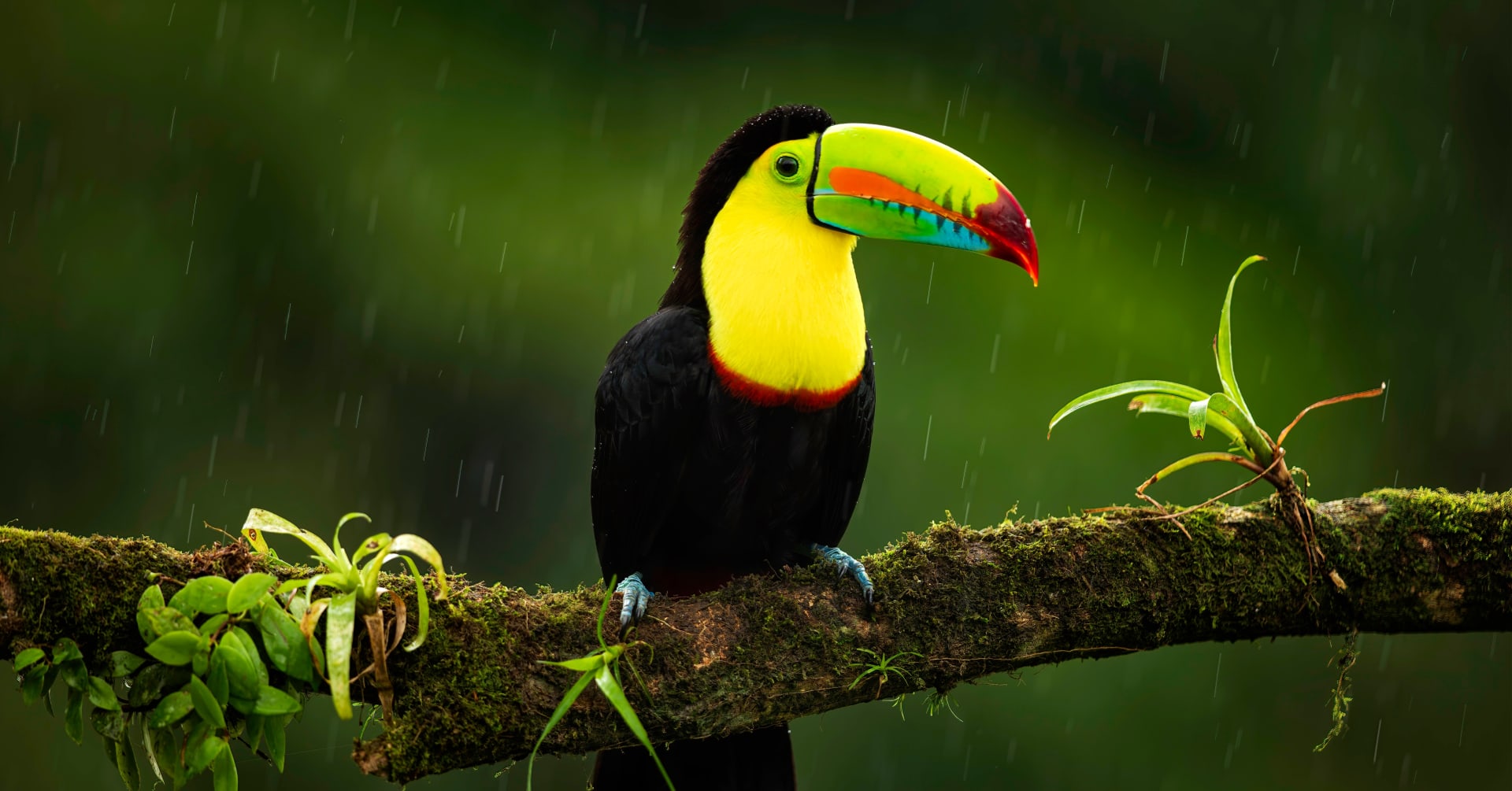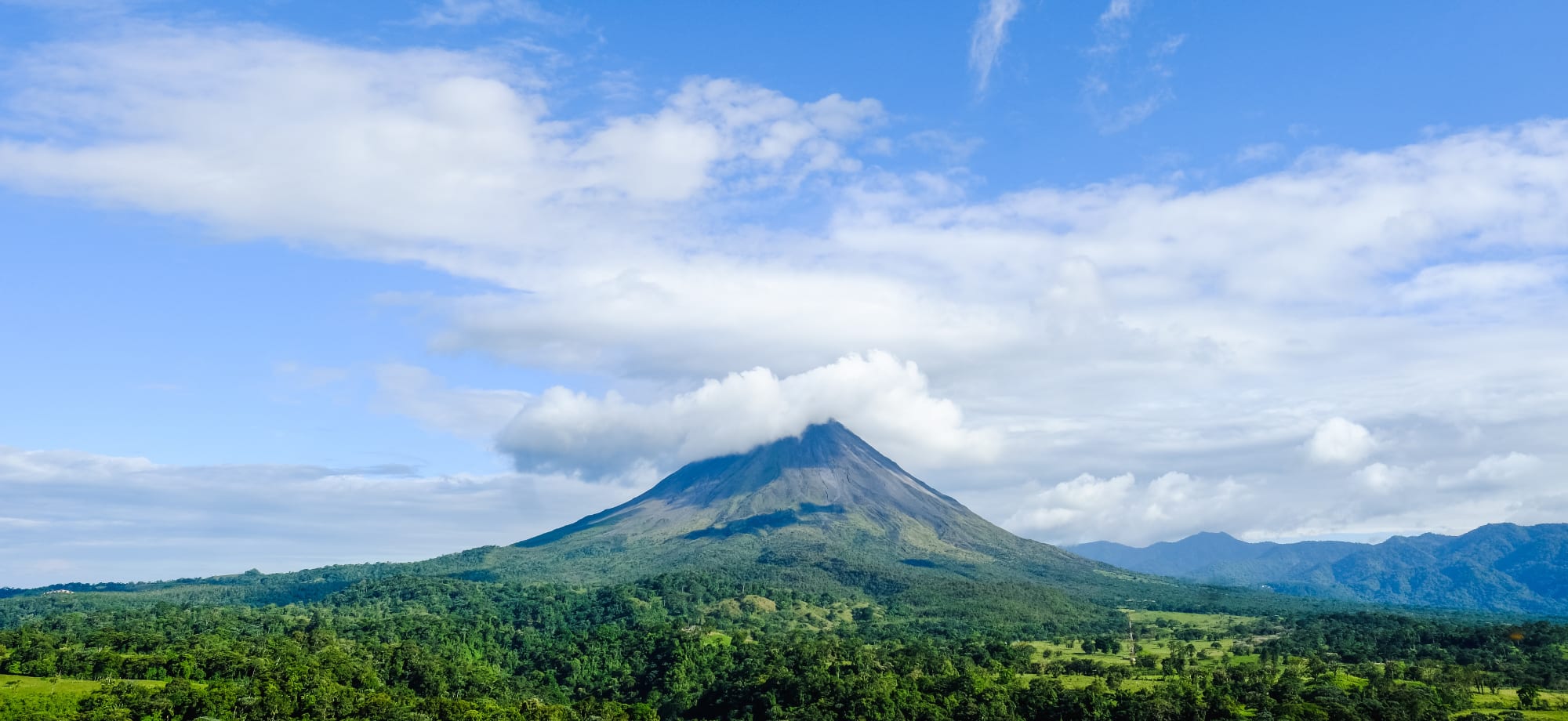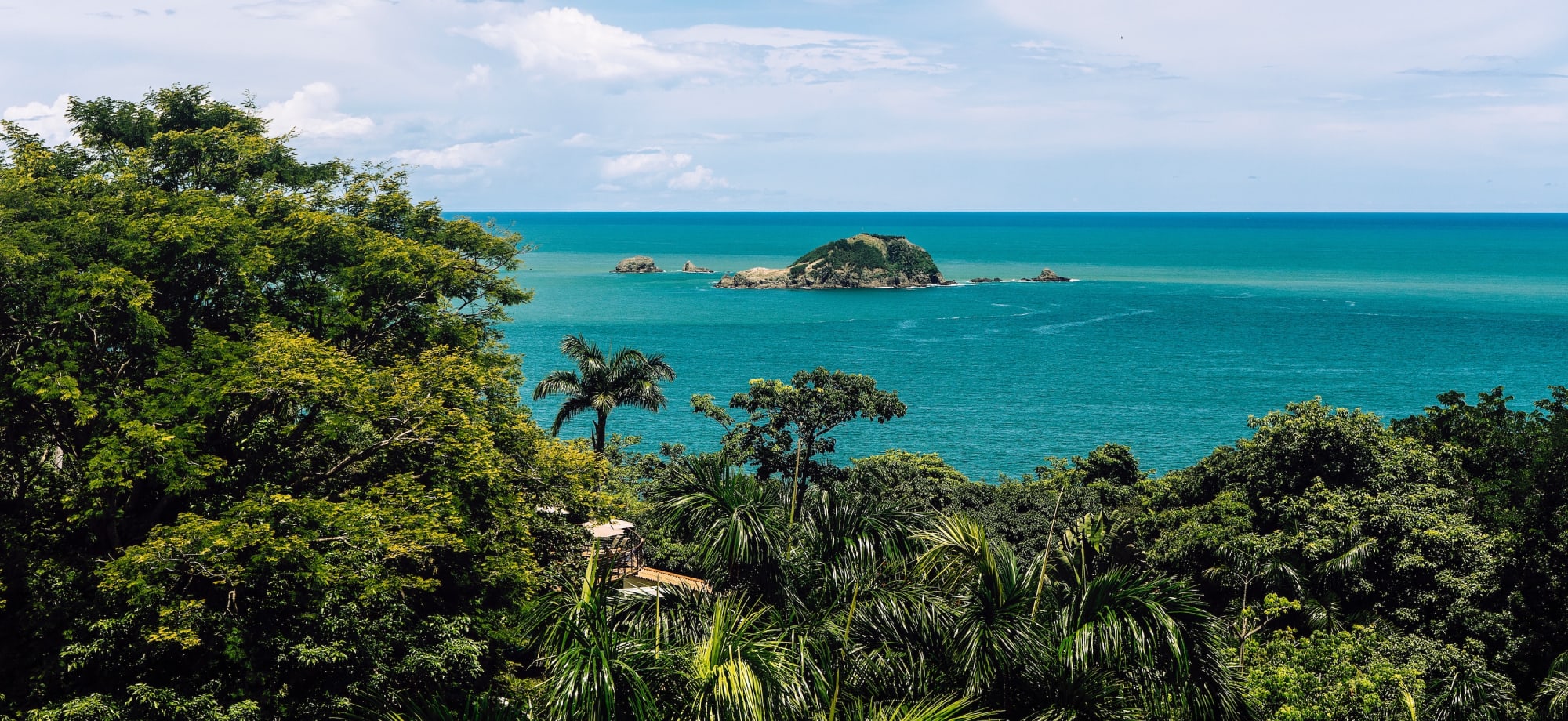Costa Rica is a haven for wildlife, rainforests, pristine beaches, and rumbling volcanoes. Here’s our guide to travelling responsibly and ethically in Costa Rica.
Despite occupying less than 1% of the world’s surface, Costa Rica is brimming with glistening beaches covering two oceans, mystical cloud forests ricocheting with noises from hundreds of species, and rainforests offering activities like horseback riding, 200-metre-high zipline excursions, and treetop walks filled with encounters from the likes of howler monkeys. Unsurprisingly, Costa Rica houses more than 5% of the world’s biodiversity.
Beyond this, the country has gained a reputation as a pioneer of ecotourism, with over 25% of its land protected by national parks, private reserves, and wildlife sanctuaries. Eco-lodges, conservation projects, community-based tourism operators, and 90% of their electricity generated through renewable resources are just some ways Costa Rica balances the harmful effects of mass tourism and climate change.
While Costa Ricans have made waves in this department, at Wayfairer, we believe everyone can do their part to help locals protect their homes, wildlife, and economy.
We are proud to work with local guides, fantastic accommodations and tour operators who share our responsible and sustainable travel values. Below are some tips and practical advice for responsible travel to Costa Rica.
Looking for travel inspiration? Wayfairer trip ideas that will take you to Costa Rica:
(hover and click to see the full itinerary)
1. Low Carbon Activities
To balance the need to fly to Costa Rica, we recommend taking part in low carbon activities while on holiday. Small actions like kayaking, walking, and cycling to and from different points of interest are not only great for your health, but they also help reduce pollution and present a more authentic picture of the country you’re visiting. You’ll have more time to see, smell, and seek exchanges with local lifestyles and behaviours.
For example, in Tortuguero, adventure travellers should opt for kayaking along waterways looking for turtles and monkeys, while cyclists might like to try their grit against volcanic and rainforest landscapes. One surprising activity that’s both fun and supports reforestation is ziplining. It’s exhilarating and offers a bird’s eye view of the forest canopies, untouched flora, and fauna. Your excursions here have the added benefit of providing economic opportunities and financial aid to remote communities.
2. Protect the Animals
During your holiday to Costa Rica, be mindful of the wildlife. They might seem exotic (and deserve our love and praise), but their welfare and safety should never be at the expense of our amusement. The general rule of thumb is to maintain a safe distance from wildlife, so as not to scare them. Please don’t feed or touch them; more importantly, do not take selfies with the animals. In fact, the Costa Rica government launched a campaign, Stop Animal Selfies, in 2019 to educate tourists on the cruelty of forcing animals to take selfies with you, e.g., it is unacceptable for a person to be holding, restraining, touching, or manipulating an animal for a photo.
3. Don’t Purchase Animal Products
Purchasing locally is always a great idea as it benefits local craftspeople. But please never buy items made of animal products, such as turtle shells and eggs, sea shells or coral. These products might come from protected or endangered wildlife and will undoubtedly threaten the species and their fragile habitats. Instead, head to smaller markets, workshops, or communities where you can see artists/creatives working. This way, you’ll know any money spent will directly benefit them. Likewise, avoid larger markets like the Mercado Central in San Jose, as these often promote imported goods.
4. Eat Responsibly
At Wayfarier, we encourage our clients to eat locally in restaurants, cafes or at street stalls. This will give you a more authentic flavour of Costa Rica, and it’ll help boost the local economy. But please avoid eating local dishes using rare animals like turtles in turtle soup, otherwise known as Sopa de Tortuga.
5. Join Community Projects
With such a diverse landscape and biodiversity, it’s easy to spend your whole holiday in Costa Rica consumed by what’s right on your doorstep. But if you’d like to aid and give back to a country that’s given you a great holiday, why not get involved with community projects?
For starters, many Costa Rican farms welcome visitors looking to volunteer, learn about farming practices, and how to cook with local ingredients. Similarly, turtle conservation groups allow conscious travellers to volunteer and protect adult turtles, eggs, and hatchlings from predators. On top of this, you’ll have opportunities to build hatcheries, go on beach patrols, replant mangroves, clean up the beaches and collect turtle eggs (this is a part of the protection measures). When looking for ethical turtle sanctuaries, speak to a Wayfairer travel specialist who can point you in the right direction.
Many hotels in Costa Rica have their own conservation/community projects that you can also be a part of. For Example, Tulemar Resort has partnered with The Sloth Institute, a charity dedicated to protecting and conserving Costa Rica’s sloth population. Through this initiative, guests can donate to the non-profit organisation, shop from their Amazon Sloth Wish List, or symbolically “Adopt-a-Sloth”, which aids in keeping wild sloths in the rainforests and helps send sloths back home.
6. Local Guides & Community-Run Tourism
At Wayfairer, we partner with local guides and community-run projects when visiting tourist sites. This is a great way to put money back into the local community, plus these professionals have in-depth knowledge, enthusiasm, and love for what you’ll be seeing, offering you a richer and more authentic experience of Costa Rica. One of Costa Rica’s biggest reserves is The Kekoldi Indian Reservation, home to Cabecar and Bribri communities. Through a partnership with a local organisation, travellers can participate in guided hikes through the rainforest, visit culturally significant sites, learn about sacred traditions, and experience a traditional lunch provided by these communities.
7. Opt for Eco-Friendly Accommodation
Throughout Costa Rica, there is a programme that encourages hotels, and tour operators, to employ and meet sustainable practices. It is called The Certification for Sustainable Tourism, and we’re proud to partner with accommodations that share our values for responsible travel. For example, we work with Tortuga Lodge, which has converted 26 acres of land into a private nature reserve. Pacuare Lodge was likewise built using lumber from a reforestation project run by local farmers and it has also purchased 340 hectares of primary rainforest to protect local ecosystems.
If you feel ready to start planning your luxury vacation, call our Luxury Travel Specialists for a chat or fill out our no-obligation enquiry form.








